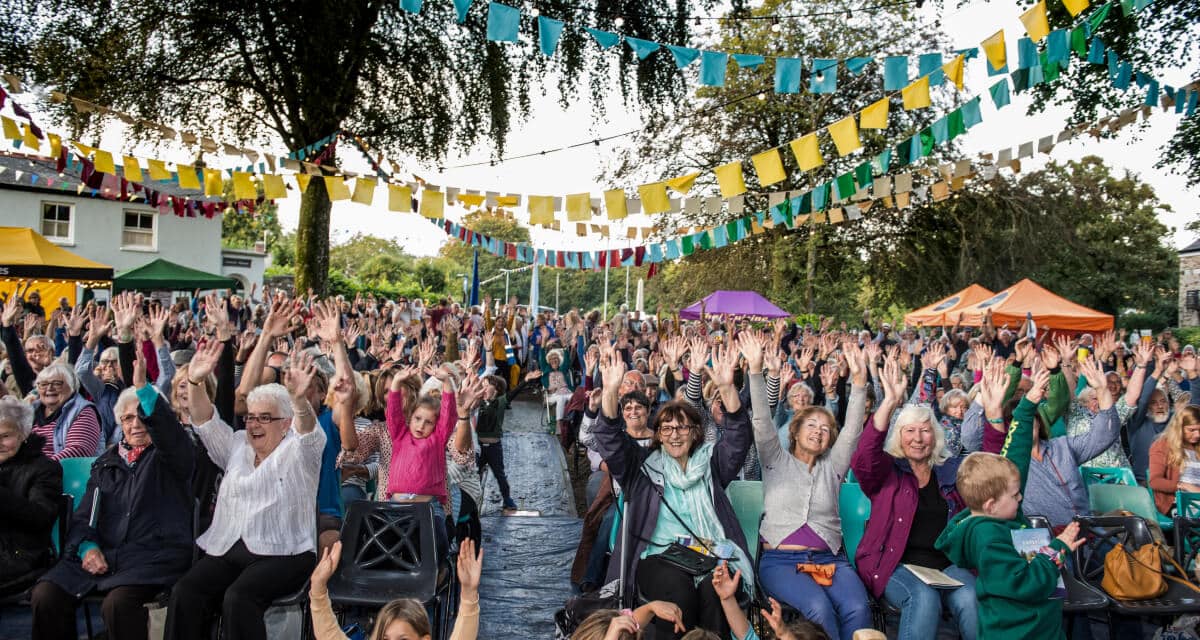Last Updated: 18/11/21
Policy statement
Our operations influence the local, regional and global environment. We are all – trustees and employees alike – committed to minimising their harmful effects whenever and wherever possible. This carbon reduction policy is our commitment to achieving that goal.
Implementation
Overall responsibility for this policy lies with the Board of Trustees. The responsibility for implementing it has been delegated to the chief executive.
New employees and volunteers will be made aware of the carbon reduction policy as part of their induction programme. Employees and volunteers will be updated on any changes or new guidelines.
Grant awarding
We have a responsibility to protect the environment for future generations. This includes, where we can, through the communities and projectsA piece of work that delivers an output. we support. We particularly welcome applications that take account of, and mitigate, their impact on the environment. We recognise that many groups are run by volunteers and that their time is precious, so we will do our part to encourage, work with and guide, rather than dictate, applicants to develop sustainable, low carbon options.
Home working
We will prioritise hybrid working for staff and volunteers to limit the travel associated with commuting.
Energy use in the office
We will use the minimum levels of heating and lighting in our office(s) consistent with staff comfort and Health and Safety. Where necessary we will negotiate with the landlord over physical improvements to help us achieve this.
Communication through computer technology and teleconferencing
To keep travel associated with face-to-face meetings to a minimum, ICT communication will be used wherever possible as long as it doesn’t affect the operations of the CCF. Emails can be used to cover much of the communication, and teleconferencing should be used as the default arrangement for meetings. To reduce the carbon emissions from emails staff will be urged to reduce the reply-to-all function to a minimum. We are committed to paperless communication and when we will use paper based communication we will use recycled paper and stationary.
Procurement
We will manage the carbon impact of our procurement as follows:
Sourcing – procurement for major items will be measured against the real life or (in the absence of that information) perceived carbon impact of materials. Suppliers will be asked for information on the embedded emissions in their products and the measures they have taken to minimise packaging.
- Utilisation – Consumables (e.g. printer cartridges) are procured and recycled through manufacturers.
- Plastics – we will seek to remove plastics from all consumables and replace with low carbon re-usable or recyclable alternatives.
- Catering – we will seek to work with caterers who use local produces and minimise the use of packaging.
Recycling
A primary element in our environmental/low carbon policy is achieving sustainable waste management. We acknowledge our responsibility to recycle materials, and to use recycled materials, where possible.
We commit to:
- Recycling externally produced marketing material and correspondence once it is no longer needed.
- Continuing to look for ways to reduce the amount of paper used by circulating information by electronic means.
- Recycling any waste materials arising from the activities of the CCF (e.g. bottles, plastics) wherever possible.
- Recycling end-of-life equipment.
Disposal of waste
We will ensure that any waste materials arising from our activities that are unsuitable for recycling are disposed of through safe and responsible methods.
Transportation
Travel for work and business makes up a significant part of UK carbon dioxide emissions and fuel consumption. Both of these have a substantial negative impact on the environment through pollution, climate change and use of natural resources. Companies and charities therefore need to do as much as possible to make their travel more sustainable and environmentally friendly.
Commitment to sustainable travel
This policy provides information on how to limit our carbon dioxide emissions and reduce travel costs. The best way to achieve this is to avoid travel all together, and where that is not possible, to keep travel to a minimum and recommend car sharing. We appreciate the difficulties involved in achieving these goals in a rural area and welcome all suggestions about how they might be more effectively implemented.
Advice on how to implement
All new employees and volunteers will be made aware of the plan, and their responsibilities to it, when they first begin work. All staff need to be kept up to date with the policy and informed of any amendments or new guidelines.
Minimising travel
It is important that we all avoid unnecessary journeys. By cutting down on the amounts of travel of any kind, both costs and greenhouse emissions can be reduced. We will consider journeys carefully in order to avoid any that are not needed, especially for long distance travel.
Walking and cycling
We will encourage and support those of us who live within a reasonable distance of work to walk or cycle, if it is safe to do so. Walking will be encouraged for short distance journeys as this avoids all environmental and financial impact. Cycling is another way to avoid carbon dioxide emissions entirely and will also be encouraged for shorter journeys.
Public transport
For longer journeys, public transport will be used as much as possible. This is preferable to personal car or taxi use as the overall environmental impact is significantly smaller and road congestion is reduced. Information and guidance on public transport will be provided and all employees and volunteers should be made aware of publicly available information.
Car sharing
If cars need to be used, all staff, trustees and volunteers will be encouraged to share lifts when at all possible. For meetings, this means the organiser knowing where attendees are coming from and actively encouraging car sharing. This will help to reduce the number of cars on the road and therefore greenhouse emissions and fuel consumption.
Taxis and individual car use
As far as possible, travel by taxi and individual car use will be kept to a minimum. Public transport and car sharing will be used instead whenever feasible.


